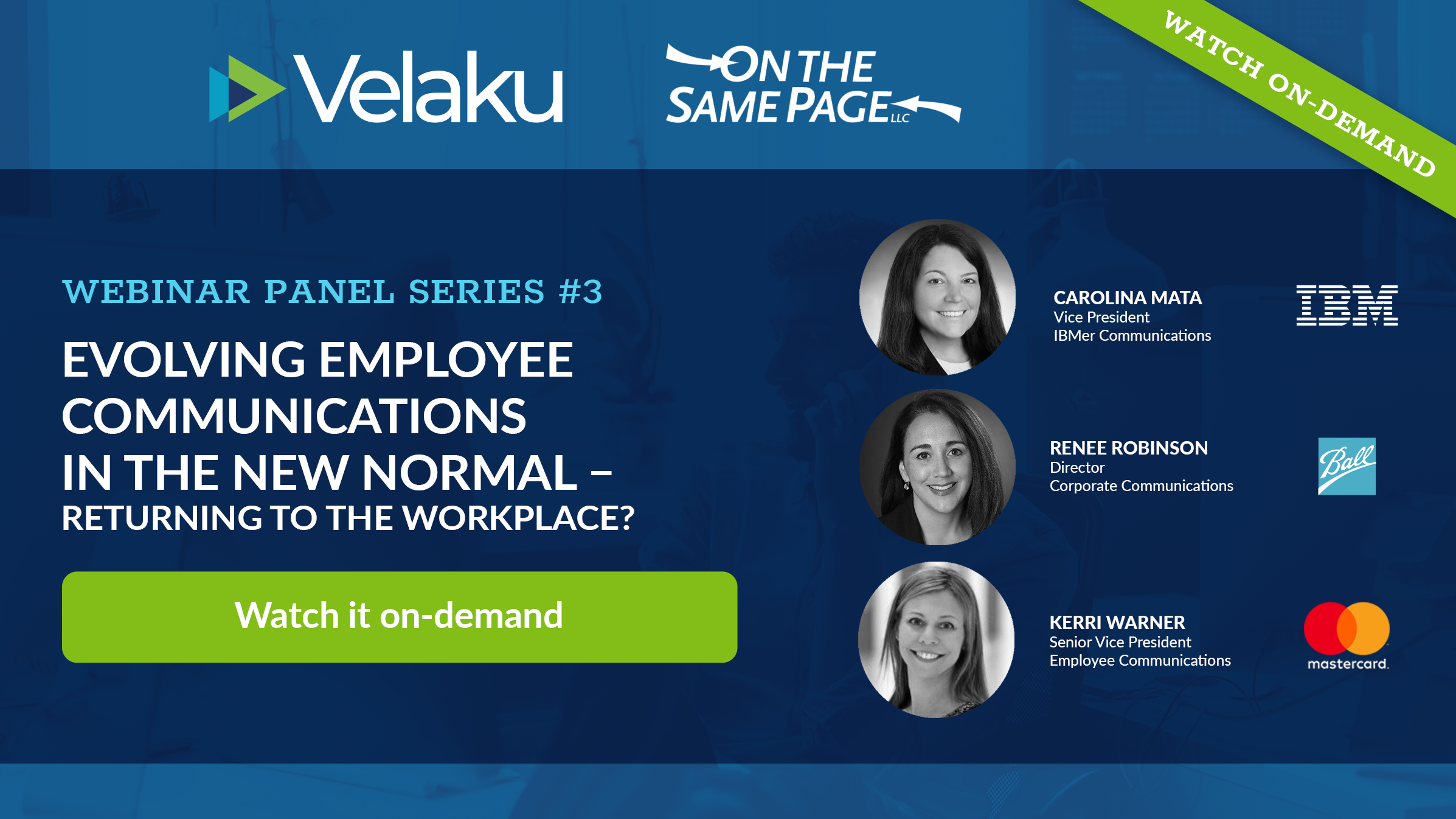As government regulations and guidelines are being eased or lifted in many states, companies are ramping up the reality of non-essential employees being allowed to return to physical offices. Juggling the challenging requirements for safety and well-being with the readiness of their employees means shifting expectations and in some cases, the underlying paradigms of what a job - and what 'an office' means.
In the third episode of our webinar series on Communications in the New Normal, co-hosted by Velaku and On the Same Page, Carolina Mata, VP IBMer Communications at IBM, Kerri Warner, Senior VP, Employee Communications at Mastercard and Renee Robinson, Director of Corporate Communications at Ball Corporation, shared many of their best practices for what they're doing for employees to begin returning to company offices and workplaces.
Juggling Government Regulations, Company Policies and the Needs to Your Employees
Global corporations in particular need to comply with changing and varied rules, along with different phases of reopening for different locations as the COVID-19 pandemic rules change.
Our three panelists are all part of companies that have global offices. Here’s their advice:
- Just because you have government permission doesn’t mean that you have to open your offices to require employees to return to the physical workplace.
- Mastercard, for example, has a minimum lead time of two weeks from the time they are permitted to reopen to the time employees can phase back into the office environment - should the employee choose to.
“Just because a government decides it’s going to reopen an economy does not mean that we are.” - Kerri Warner, SVP Employee Communications, Mastercard
- Don’t rush the process, for your sake as well as your employees.
- “People will come back when they are ready,” says Kerri Warner of Mastercard.
- Keep your inclusivity practices in play as you ask people for their readiness to return to an office environment.
- Provide examples of wording and positioning that managers can use in emails and communications to alleviate any confusion.
- Give clear visual examples of “what the workplace might look like” and expected behavior in the workplace to prepare employees.
- Continue to survey your employees for common concerns or questions - the situation is constantly and rapidly changing, as are employee's perceptions.
IBM Use Case:
Ask Your Employees for Feedback
IBM’s culture of co-creation and respect for it’s 350,000 global “IBMers” means that it asks its employees (IBMers) for a lot of input when it comes to setting direction. “We don’t tell them what to do, we build together what to do”, says Caroline Mata of IBM.
In a recent 3-day Jam on gathering ideas for returning to the office, IBMer's engaged in ongoing dialogue on four main topics: best practices, broken paradigms, how IBMers are delivering to clients differently, and the things IBMers have accomplished or lost by working virtually. While the data is still being analyzed, the take-away should be that innovation needs to come from within your workplace, as a collaborative force, when it comes to creating the future.
- Rely on a team composed of crisis communicators, real estate professionals, facilities and regional communicators to make reopening decisions.
- Stay flexible, and adjust as needed.
- Make sure your communication stays genuine and authentic.
Velaku is communications software that puts your content right where your employees are working every day - Office 365 apps. Velaku makes it easy to create, edit, curate and target content that is broadcast to apps including SharePoint, Outlook, Yammer and Teams. It’s quick to implement, easy to work with, and seamless to use. It's not content all in one place — it's content all in the right places.





